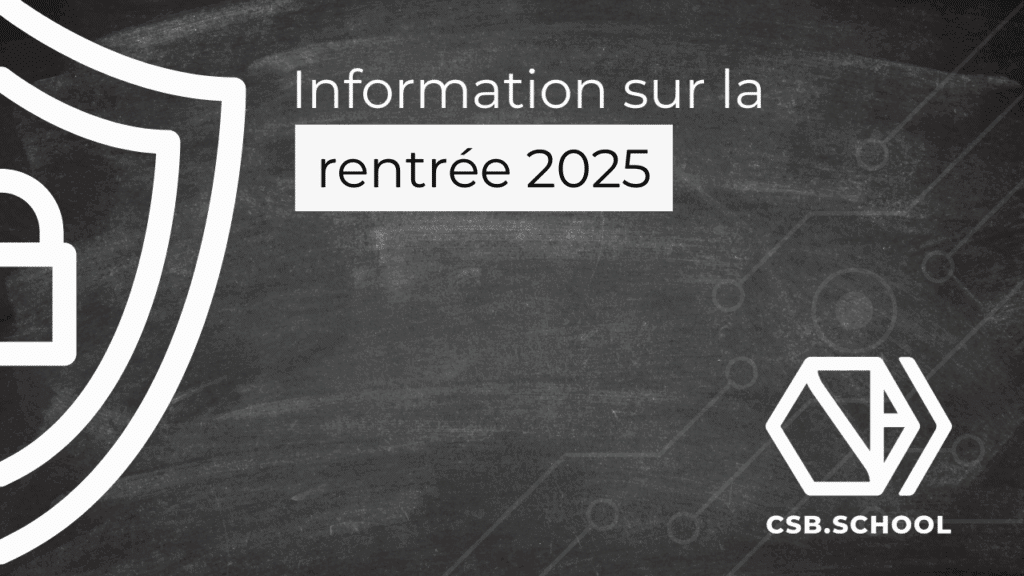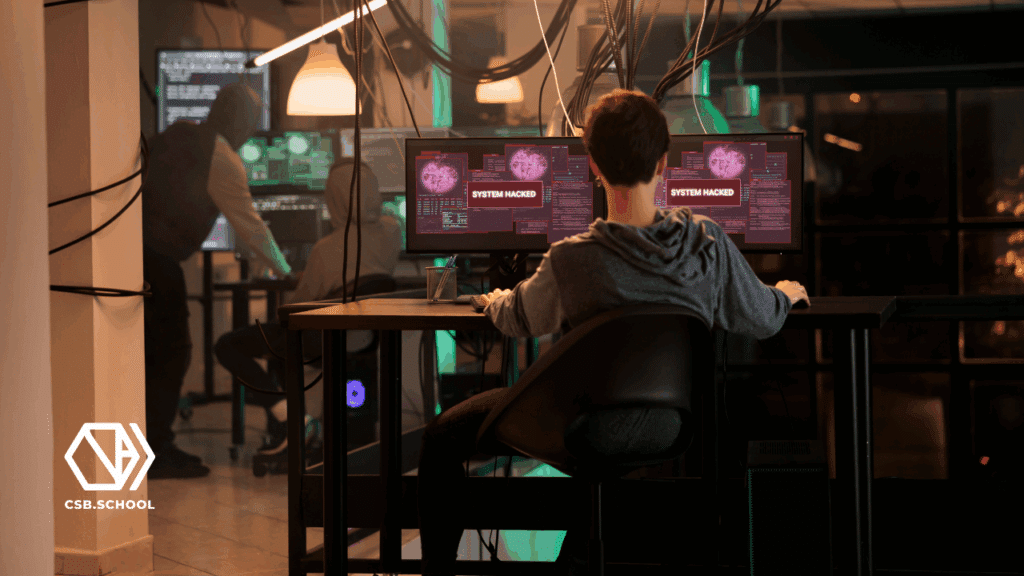Computer security or cybersecurity?

Sommaire
- 1. Protection of personal data: differences between IT security and cybersecurity
- 1.1. Protection of personal data: why is this an issue?
- 1.2. Why is it necessary to ensure the protection of personal data?
- 1.3. How does the protection of personal data apply?
- 2. Cybersecurity and computer security: what are the differences?
- 2.1. What is computer security?
- 2.2. Cybersecurity: what definition to give?
- 3. What are the principles to apply for successful protection?
Protection of personal data: differences between IT security and cybersecurity
For personal or professional use, IT and new technologies have become essential. The more they are used, the greater the risk of private information being revealed. To better regulate shared personal data, two strategies are put in place: IT security and cybersecurity. How do they differ?
Protection of personal data: why is this an issue?
The priorities of businesses and individuals alike have changed enormously in recent years. In question, the digital transition: no company can do without an IT presence. Some structures, such as e-commerce stores, even depend entirely on it. The rise of digital use forces us to take renewed precautions, particularly with regard to our personal data.
Why is it necessary to ensure the protection of personal data?
Passing your credit card, giving your postal address, filling in your personal information: the number of details transmitted by computer is impressive. However, the data that can be collected doesn’t stop there. It is easy to retrieve, for example, consumption habits or to seek access to stored documents, especially in the cloud.
Without vigilance, a malicious person can then access the entire life of an individual or all the private data of a company. For the latter, it quickly becomes a question of reputation and customer loyalty. Customers will consume less easily at home if their confidentiality is not ensured. In some respects, it is even a legislative point to follow.
How does the protection of personal data apply?
The legislation adapts, in fact, to offer a security that evolves with IT. It comes from two angles: cybersecurity and computer security. These two concepts, although similar, are in fact complementary. However, both devices are necessary to achieve effective custody of personal data. In France, for example, this protection applies by two laws: No. 78-17 of 6 January 1978, or the Data Protection Act, and the General Data Protection Regulation (GDPR), which has been valid at European level since 2018.

Cybersecurity and computer security: what are the differences?
These two disciplines are often mixed up, because they tend to secure the same aspects. However, these are two very different forms of thinking and strategies, which must be learned to combine. The challenge is simple: protect users’ data, as well as the devices they use. Against what? Any form of external malevolence. To achieve this, cybersecurity and IT security use separate tools. How to differentiate them?
What is computer security?
Computer security is specific to the protection of information technology. It analyses the weaknesses of an IT system in order to put in place appropriate tools to reinforce them. Specialists act to prevent, for example, Trojan horses, viruses, malware, or data theft.
To achieve this, teams implement different strategies. They can, for example, restrict access to the internal network or set up firewalls and antiviruses. All these tools are configured according to the specific needs of the computer systems (IS) to be protected. This involves, for example, data encryption, user authentication, or server room control.
Cybersecurity: what definition to give?
Cybersecurity, on the other hand, is concerned with securing the use of digital technology in companies or by individuals. It is a question of protecting information by implementing policies directly on the IS. Specialists carry out analyses that highlight the flaws through which hackers could attempt phishing, place viruses or make ransomware.
Beyond prevention with staff, cybersecurity also includes the definition of security standards and the creation of strategic plans. The whole thing is thought out with the aim of ensuring the security of the network, applications and information. Cybersecurity must also allow companies to bounce back quickly after an IT incident, always improving the strategy. Indeed, it evolves according to the threats that can be encountered and the defined computer protocols.
Companies currently place more than 70% of their value in the data they store. A defect in a company’s cybersecurity or IT security can be fatal to it. Institutions that have not invested enough in their industrial cybersecurity take the risk of ransoms or site paralysis. The leakage of personal data, as a bonus, can put them at legal fault. Awareness of the issues is increasingly important, leading to a boom in the sector.

What are the principles to apply for successful protection?
Whether it is cybersecurity or computer security, the issues are similar: only the methods differ. Consequently, the same principles must be respected, on both sides, to ensure exemplary safety. Combining these three fundamentals makes it possible, as a bonus, to reconcile the two systems in the reflection on IT security within the company:
- guarantee the principle of confidentiality by giving access to content only to authorized persons, by setting up specific controls, such as encryption or passwords by level of access;
- ensure the integrity of information and networks by ensuring, for example through antivirus and firewalls, the good condition of their content in order to prevent the spread of files or malicious actions within the network;
- preserve the full continuous availability of content and networks to certified users by designing security devices that do not wrongly limit access to them, or by providing alternative systems in the event of hardware or software failures.
In computer security as in cybersecurity, these fundamental principles work especially when a real educational effort is made. For companies, and any expert collaborator in the sector, it is essential to communicate well on IT security standards. Doing these jobs, therefore, also means being a teacher, and enjoying sharing good practices.
Continue reading

2025 Back-to-School Dates – CSB.SCHOOL

CSB.SCHOOL Commits to Cyber Talent: Vianney Wattinne to Speak in Lyon on September 18

